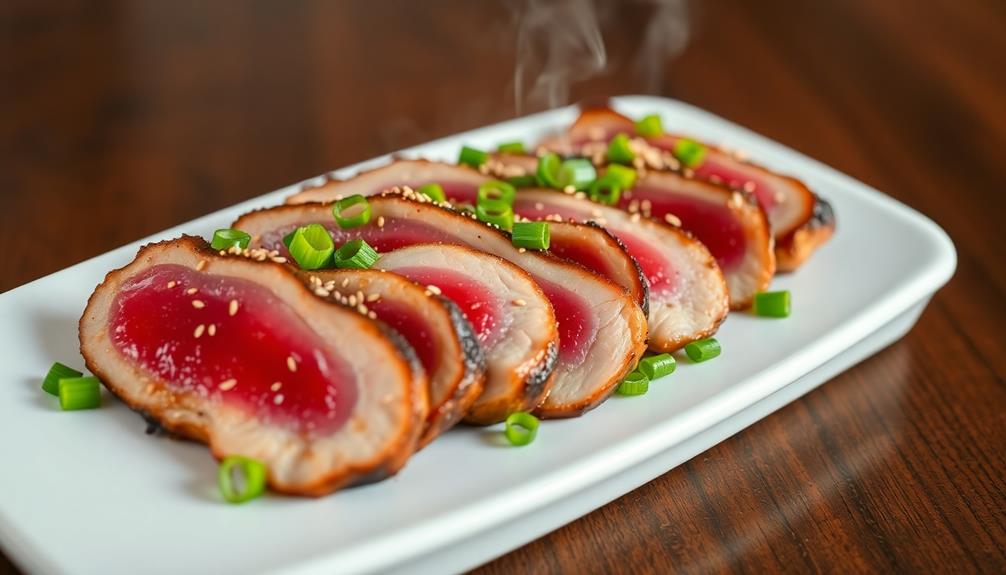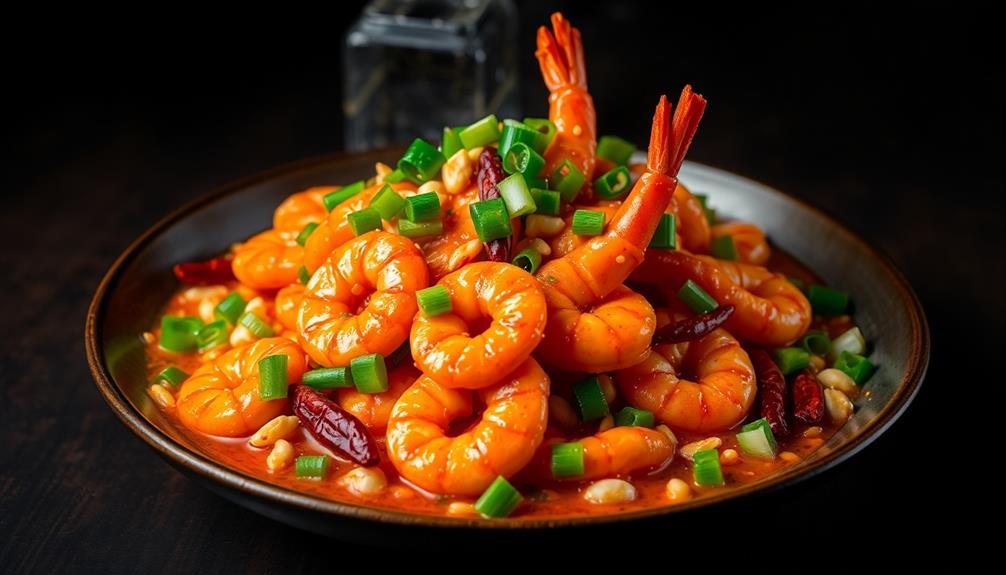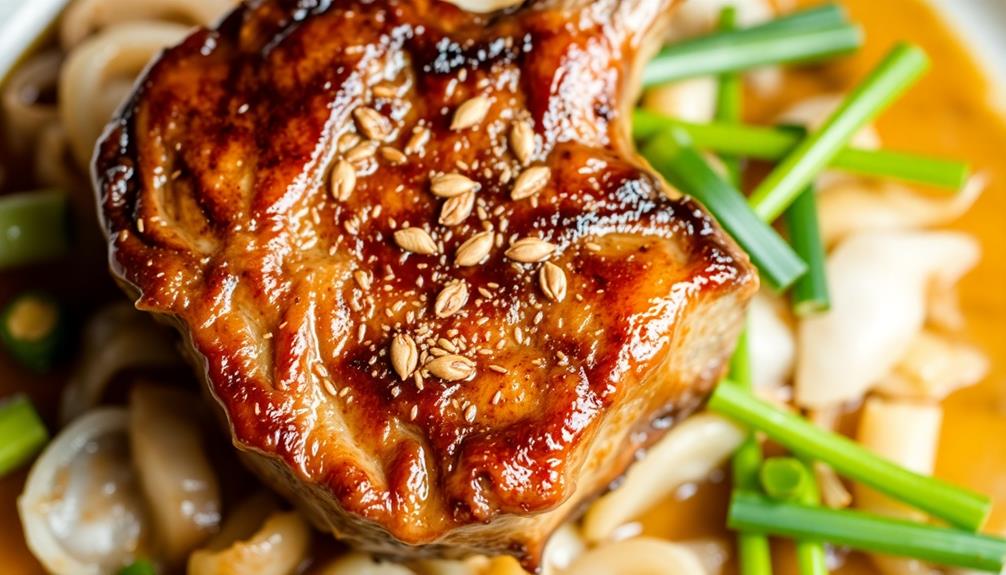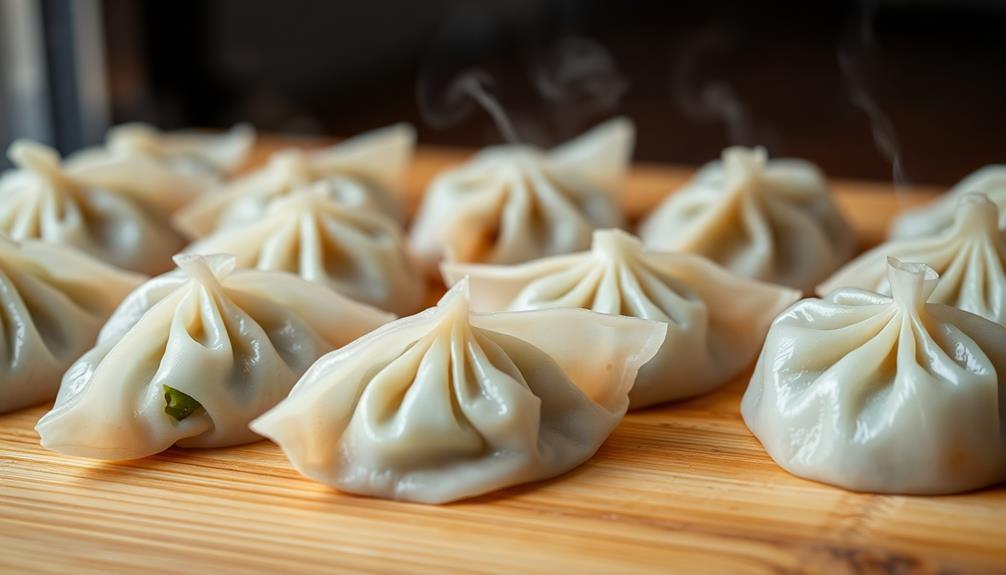Twice-cooked pork is a mouthwatering classic dish from Sichuan, China that'll have your taste buds dancing! It starts with tender pork belly that's boiled until perfectly cooked, then stir-fried with garlic, spicy bean paste, and other tasty seasonings. The two-step cooking process gives you an incredible contrast of crispy outside and melt-in-your-mouth inside. Serve it up hot, garnished with scallions, and don't forget the Sichuan chili oil on the side – it's a match made in heaven! This dish has been enjoyed for generations, and if you keep reading, you'll discover why it's a true representation of Chinese culinary tradition. The beauty of twice-cooked pork lies in its balance of bold flavors and textures, making it a standout among Sichuan dishes. While commonly compared to other pork delicacies such as traditional char siu bbq pork, its unique preparation and use of fiery seasonings set it apart as a spicier, more intricate offering. Whether you’re a fan of mild or bold flavors, this dish promises an unforgettable culinary adventure with every bite.
Key Takeaways
- Twice-cooked pork is a classic Sichuan dish that features a two-step cooking method of boiling and stir-frying pork belly.
- The technique enhances flavors and textures, creating a melt-in-your-mouth dish with a crispy exterior and tender interior.
- Common seasonings include garlic, five-spice powder, doubanjiang (spicy bean paste), and chili flakes, balancing heat and savory elements.
- Twice-cooked pork is typically served hot, garnished with chopped scallions, and accompanied by Sichuan-style chili oil.
- The dish exemplifies Chinese culinary history and tradition, showcasing patience and culinary technique.
History
The origins of Twice-Cooked Pork can be traced back to the Sichuan province of China, where this beloved dish has been a regional specialty for centuries.
The exact recipe has been passed down through generations, with families putting their own unique spin on the classic flavors. Back in the day, thrifty cooks would take leftover pork and breathe new life into it by stir-frying it a second time with aromatic spices and veggies.
This clever technique not only stretched the pork, but also intensified its flavor. Over time, Twice-Cooked Pork became a beloved comfort food, treasured for its rich, savory goodness.
Today, it remains a popular menu item in Sichuan restaurants around the world, delighting diners with its mouthwatering combination of tender pork, pungent chili, and fragrant garlic.
Whether you're enjoying it with steamed rice or noodles, one thing's for sure – Twice-Cooked Pork is a true taste of Chinese culinary history. Originating from the Sichuan province in southwestern China, Twice-Cooked Pork is a beloved dish that has been perfected over the centuries. The dish is known for its bold flavors, tender strips of pork, and a spicy and slightly sweet sauce. It is a classic yunnan cuisine speciality that has gained popularity not only in China but all over the world.
Recipe
Twice-cooked pork, a classic Sichuan dish, is a delicious and flavorful dish that showcases the versatility of pork. The dish involves first boiling the pork until tender, then stir-frying it with a savory and slightly spicy sauce. The result is a melt-in-your-mouth texture and a robust, complex flavor profile.
The process of "twice-cooking" the pork is what gives this dish its unique texture and flavor. By first boiling the pork, the meat becomes tender and infused with the flavors of the cooking liquid. Then, by stir-frying the boiled pork, the exterior becomes crispy and caramelized, creating a delightful contrast with the tender interior.
Ingredients:
- 1 lb pork belly, cut into 1-inch cubes
- 2 tablespoons vegetable oil
- 3 cloves garlic, minced
- 1 tablespoon grated ginger
- 2 tablespoons chili bean paste
- 2 tablespoons soy sauce
- 1 tablespoon Shaoxing wine or dry sherry
- 1 teaspoon sugar
- 1/2 cup chicken or vegetable stock
- 2 scallions, thinly sliced
Instructions:
In a large pot, bring the pork and enough water to cover by 2 inches to a boil. Reduce heat and simmer for 45 minutes to 1 hour, or until the pork is tender. Drain the pork and set aside.
In a wok or large skillet, heat the vegetable oil over high heat. Add the garlic and ginger, and stir-fry for 30 seconds until fragrant. Add the chili bean paste and cook for another 30 seconds.
Add the cooked pork, soy sauce, Shaoxing wine, and sugar. Stir-fry for 2-3 minutes, or until the pork is heated through and the sauce has thickened slightly. Add the stock and scallions, and cook for 1 minute more.
Serve the twice-cooked pork immediately, garnished with additional scallions if desired. This dish pairs well with steamed rice and stir-fried vegetables.
Cooking Steps
Slice the pork into thin strips and boil it until it's nice and tender.
Drain the pork, pat it dry, and then stir-fry it in hot oil.
Season the pork with your favorite spices to give it a tasty kick!
Step 1. Slice Pork Into Thin Strips

Slicing the pork into thin strips is a crucial step in preparing this dish. You'll want to use a sharp knife and take your time, carefully cutting the pork into long, thin slices about 1/4 inch thick. This helps the pork cook evenly and absorb all the delicious flavors.
As you slice, try to keep the strips a consistent width – this will make the cooking process much smoother. Don't worry if they're not perfect, though – the most important thing is that the pork is thinly sliced.
Once you've sliced up all the pork, give the strips a quick rinse under cool water and pat them dry with a paper towel. You're now ready for the next step!
Just wait until you taste how tender and flavorful the pork becomes after all this preparation. Mmm, your mouth is probably watering already, isn't it?
Step 2. Boil Pork Until Tender

Next, you'll want to bring a large pot of water to a boil over high heat.
Once the water is bubbling away, carefully add the sliced pork into the pot.
Let it cook for about 15 minutes, or until the pork is tender and cooked through.
You'll know it's done when you can easily pierce the pieces with a fork.
Drain the pork in a colander, making sure to remove all the water.
This step is important because you don't want any excess liquid in the dish.
Now, you're ready to move on to the next part of the recipe.
Isn't this getting exciting? The pork is almost ready to be twice-cooked, which is where all the delicious flavors really come to life.
Just hang tight, and you'll be one step closer to enjoying this tasty dish.
Step 3. Drain Pork, Pat Dry

After draining the pork in a colander, you'll want to pat it dry with some paper towels.
This step is important because you don't want any excess moisture on the pork when you start the next phase of cooking. Gently pressing down on the pork with the paper towels will help soak up any lingering water or juices.
Be sure to use a few layers of towels to really get it nice and dry. Once the pork is patted dry, you can discard the used towels.
Having a dry surface on the pork is crucial for achieving that delightful crispy texture you'll get when you fry it up later. So don't skip this step!
Taking the time to properly dry the pork will pay off in the end with a fantastic twice-cooked pork dish.
Step 4. Stir-Fry Pork in Hot Oil
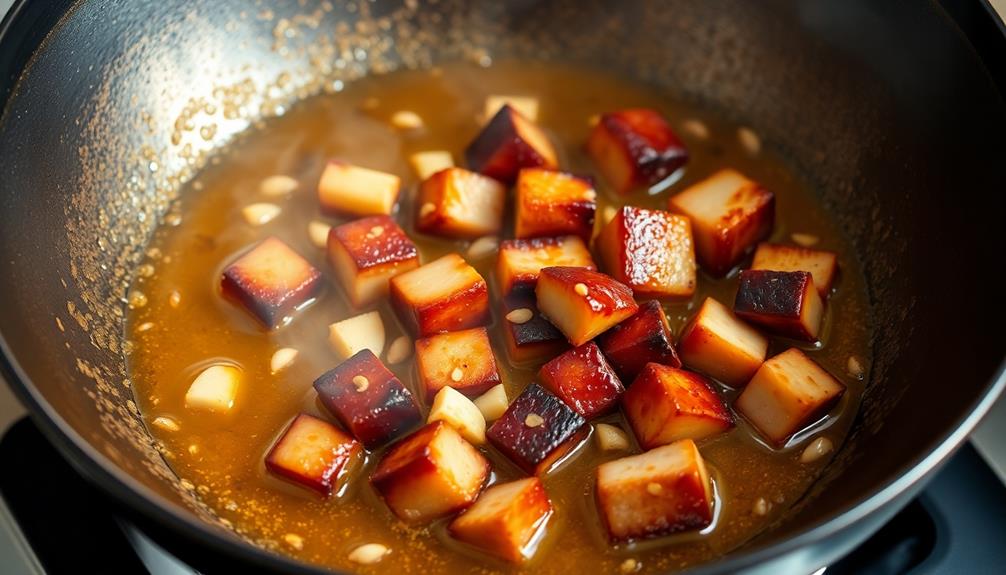
With the pork now nicely dried, it's time to stir-fry it in hot oil.
Heat up a large skillet or wok over high heat and add a couple tablespoons of vegetable oil. Once the oil is shimmering, carefully add the pork.
Don't overcrowd the pan – you want the pork to sizzle and brown, not steam. Stir-fry the pork, tossing and turning it frequently, until it's nicely browned on all sides, about 5-7 minutes. The high heat will help the pork develop a delicious crust.
Be sure to keep a close eye on the pork and adjust the heat if it starts to burn. You want it cooked through but still juicy.
When the pork is done, transfer it to a plate and set aside. We'll be adding it back to the pan a bit later to finish the dish.
Now that the pork's taken care of, let's move on to the next step!
Step 5. Season Pork With Spices

Now that the pork has been seared to perfection, it's time to season it with a flavorful blend of spices.
You'll want to start by gathering a few key ingredients – some fragrant garlic, a pinch of five-spice powder, and a sprinkle of chili flakes to add a little kick. Crush the garlic with the side of your knife and give it a rough chop so it releases its delicious aroma.
Next, measure out the five-spice powder and chili flakes, mixing them together in your palm.
With your spice mixture ready, it's time to get seasoning! Grab the seared pork and rub the spices all over the surface, making sure to get into every nook and cranny.
The fragrant garlic, warm five-spice, and zesty chili flakes will come together to create an incredible flavor profile that'll have your taste buds dancing.
Once the pork is evenly coated, you're ready for the next step – time to get that second cook going!
Final Thoughts
Twice-cooked pork is a beloved Sichuan dish that rewards patience and technique.
You've come so far on this culinary journey, mastering the art of seasoning the pork and cooking it to perfection. Now, it's time to reflect on your hard work and enjoy the mouthwatering results.
The twice-cooked method might seem daunting, but trust me, it's worth the extra effort. The pork becomes incredibly tender, with a delightful balance of flavors that will have your taste buds dancing.
Imagine sinking your teeth into that juicy, flavorful meat, followed by the satisfying crunch of the crispy edges. It's a true taste of Sichuan cuisine, and you've earned the right to savor every bite.
As you sit down to enjoy your creation, take a moment to appreciate the journey. Cooking is as much an art as it's a science, and you've mastered a technique that will impress your friends and family.
Bon appétit, my friend! Your twice-cooked pork masterpiece awaits.
Frequently Asked Questions
How Long Does It Take to Make Twice-Cooked Pork?
The preparation time for this dish can vary, but it typically takes around an hour and a half to complete. The exact duration depends on your cooking skills and the specific recipe you're following.
What Are the Best Cuts of Pork to Use?
When selecting the best cuts of pork for your dish, you'll want to choose more fatty and flavorful cuts like pork belly or pork shoulder. Avoid leaner cuts like tenderloin or loin, as they can become dry during the cooking process.
Can I Make This Dish in Advance?
Yes, you can definitely make this dish in advance. Just prepare the components, refrigerate them separately, and reheat when ready to serve. This makes it a convenient and time-saving option for your meal planning.
How Can I Make the Pork Extra Crispy?
To make the pork extra crispy, you'll want to fry it twice. First, cook the pork until it's almost done, then let it cool completely before frying it again at a higher temperature. This double-frying process will give you that satisfying crunch.
Is Twice-Cooked Pork Suitable for Vegetarians?
No, twice-cooked pork is not suitable for vegetarians. The dish involves cooking pork, which is a meat product that vegetarians avoid consuming. You'll need to explore vegetarian-friendly recipes if you're looking for a similar crispy dish.
